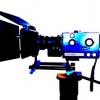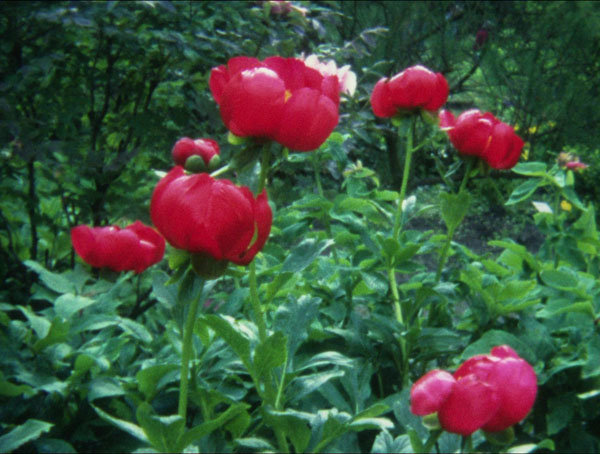-
Posts
21 -
Joined
-
Last visited
Profile Information
-
Occupation
Cinematographer
-
Location
United Kingdom
-
I can vouch for that Will as in the 80's I shot several K40's and everyone kept jamming. I sent the lot to Kodak and eventually they replaced them muting it was a bad batch. Of all the cameras I have used over the years the Leicina Special delivers a very steady image over all overs for what its worth and I love using 'the brick'
- 26 replies
-
- ektachrome
- color reversal
-
(and 1 more)
Tagged with:
-
Mark. Another top tip for you when buying a camera. Always ask the price before flashing your batteries about. I would never spend my time looking at anything before I had asked the price. :blink:
-
A top tip. Go to used item market and expect you do of which we have many over here. The top tip is always carry 6 AA batteries so if you see a nice clean cine camera you have batteries to see if it runs and the light meter works. I secured a Sankyo 620 for £10 and tested it at the traders stall a few years ago, came home and put a film thru it and it processed fine. Good luck.
-
Hello Kieran Nice to read your post as back in the 1960's I was also a new young film maker...once upon a time. I started at the bottom a little Quartz 5 Standard 8mm cine camera my first epic film being a 50ft remake of Dracula with my school friends, I guess we have all done it. After learning a few skills I upgraded to the new Super 8 format back then and over the decades have tried most cameras that were made also being involved with many a film group. My own tip would be start with a basic Super 8 camera perhaps a suitable Nizo which usually have a very good lens. If you are filming Positive film stock to project it on screen you will be cutting the film to edit so will need a viewer the Elmo 912 was a good one with clear screen. Projector wise a Eumig 810 or 810D was always and is still popular. You'll need a CIR tape splicer to join your clips back together. If you intend to just film with Super 8 then edit in computer after having it scanned you can forget all of the above except the camera. A tripod is a must from this old timer although these days you will see many gadgets to use. On the 16mm front I had a K3 but many problems with light leakage from the removable side due to poor design of the lock mechanism. The Bolex 16mm cameras are excellent which I still use from time to time. Pop in your local library as many books on Home Movie film making over the years and these are a very good start for a newcomer. Have fun :-)
-
PatheSuper8 Finished scanning my 1960's Super 8 filmed with a Pathe Super 8 camera, yes they made them as well. Here is a quick grab from that reel stood the test of time rather well and a very low cost cine camera back then.
- 26 replies
-
- 1
-

-
- ektachrome
- color reversal
-
(and 1 more)
Tagged with:
-
Nice to read of people actually projecting films as this is what reversal was really made for. I've completed scanning up my 1960's home movies filmed with K25, yes simon it was amazing and once again we bemoaned the loss of that to K40. One of my films was a family Christmas all very colourful with dad in his glorious Santa costume. To my eyes if anyone is filming to later scan they should really be using negative which personally I love 50D which if scanned and post prod right looks up with 35mm. Using Pos yes we have the best of both worlds getting 'that film look' and projectable also being able to physically cut and splice which we still do here. The new Super 8 stock is the best reversal available today and the Leicina Special I used to run mine off produced steady images and sharp. The scan above is revealing in that the lens is the most important thing in your hands. My Dad when he worked in a photo shop a very long time ago was told by a pro photographer boss 'the most important thing on any camera is the lens'. Of all the cine cameras I have had since the 60's and many at that the Optivarion 6-66 lens on this camera is gorgeous in use, my second camera choice is the Nizo 6080 which is versatile with a decent lens. Most of my older dramas were filmed with it and entered into festivals back in the day. Fond memories..
- 26 replies
-
- ektachrome
- color reversal
-
(and 1 more)
Tagged with:
-
Been very pleased with the new stock and ran thru my Leicina Special perfectly. 10/10 Kodak :D
- 26 replies
-
- ektachrome
- color reversal
-
(and 1 more)
Tagged with:
-
Long time ago using the film stock Svema OCh-50 but I seem to remember it was a 12 step processing it from 1st B&W developer to drying. Fortunate many of these out of date films are still around to try out and see what we get back. It looks like the old silent films as I say very Nosferatu and ideal for my project back then.
-
Not ideal but we have all done it in our time. The main problem is the hot spot generated by a 100 watt Halogen lamp, but back in the day early 80's we did change the lamp for a 12 volt 50 watt type to reduce the central intensity somewhat. Things have changed dramatically in cine film transfer as we know with scanning each frame but we sure had a great deal of fun back then experimenting with 8mm 16mm and even 9.5mm trying to get the best we could at the time down to trusty VHS tape.
-
Years ago I purchased a old Zeiss Ikon TK35 portable and converted it to 500watt halogen lamp and fitted a modern amplifier to it. It got me into 35 at very low cost all in but more recently I upgraded to a Kinoton floor stander. The old TK35 was a good introduction to 35mm and was built to last. They came in grey with later models in Blue colour. More modern portable machines were always expensive and still hold a good price even today. Keep looking you will find something.
-
Depends how far you go back but yes. Eumig were the largest manufacturer by far with the 800 series models having removable gates front and back. Norisound have a swing down gate and rear spring pressure for near constant focus. Sankyo and Fujiscope swing forward and does sound like you may have a Elmo which swing outward. Eumig machines in the 70's were known at 'the work horse' because of reliability and so many of these are still in use today.
-
It can spiral if you let it. In the 70's 8mm was looked on as the poor mans film gauge in some cine clubs (film making groups) particularly by the 16mm big guns in the UK. However, once the high end cameras arrived with quality lenses from the likes of Nizo and Leicina things changed somewhat along with Super 8 sound projectors equipped with good lighting and German f1 lenses. Some of my documentaries and dramas filmed with those cameras on Kodachrome still look gorgeous when projected, sadly Kodachome is gone and todays younger generation are missing the yellow box of K40 at £13 including processing then waiting a week for that yellow packet to fly thru the letter box. Golden memories...
-

Weddings, etc. Have camera, will travel
Lee Mannering replied to Jon O'Brien's topic in General Discussion
A bit retro but fairly interesting re cameras we have used here over the years doing Weddings. First camera 1980 Ferguson Videostar 3V20A and semi portable VHS recorder ah those were the days... Later various Sony 8 and Hi-8 camcorders. My favourite for Weddings back the was a couple of Canon DM-XM2 Mini DV which were super reliable and very popular with Videographers. Later landed a JVC JYHD110 ADX batts etc, OK camera but a bit plasticy. My latest and last round of cameras are Canon once again before I retire in a few years and having produced hundreds of Wedding Videos for my sins I think its fair to say I've seen it all in that time. My own Wedding I had filmed on Super 8 oh the irony! -
Looking back at the first post. I've used quite a but of Fomapan this year in that Standard 8 Leicina and the results were nice in black and white. Back in the 90's I was shooting a drama film with out of date Super 8 Svema OCh-50 at a cost of around £8 then seeking to get a patchy look to the image which worked really well for a drug induced dream sequence. I'm guessing that old stock would still deliver similar results today as well for anyone looking for a Nosferatu sort of look. There's nothing quite like creating a super 8 film, cutting it, adding a sound track and projecting the finished article on a white screen in the dark. I didn't have a Lecina Special back then but I did loan one for the filming taking place over a couple of months immediately falling in love with it and some years later obtaining my own. Super 8 awareness seemed to come out of the doldrums with the release of the feature film bearing the same name enjoying its second coming although for me I've not really put a 8mm camera down since the late 60's. It sure has been fun...
-
Not experienced any problems here. The hearing aid battery option was recomended by photographers as a good alternative many years ago with the cost of a battery around 33 pence. At 1.4 volts its only a fraction over the old PX-13 mercury cell, I must have shot over 80+ films using this method. I put a very small rubber washer around the cell to hold it central before securing. http://classiccameraguy.com/batteries/



